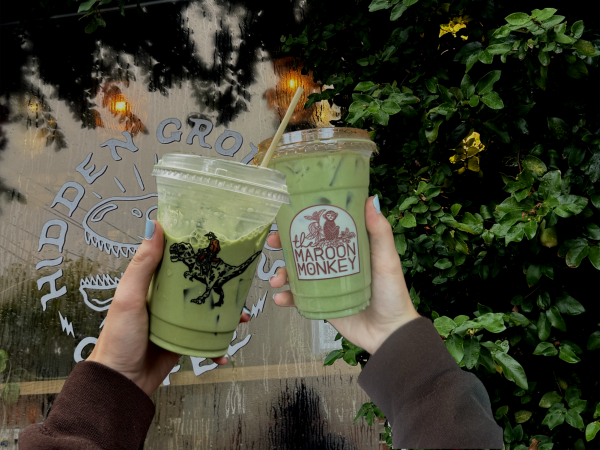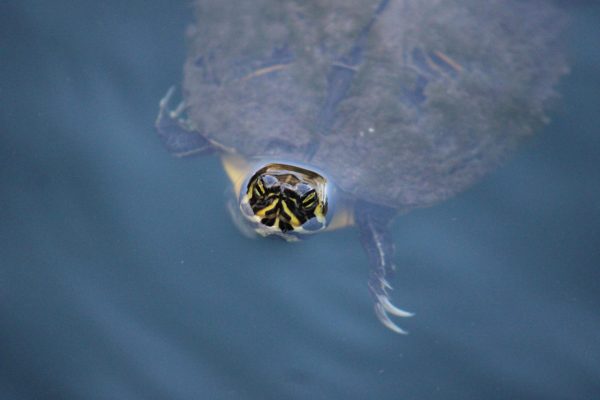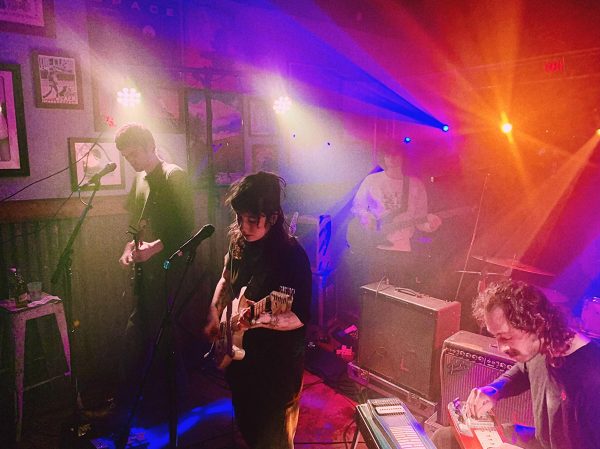REVIEW: ‘Outer Banks’ season three tangles itself up on the way to the treasure

What was once regarded as a cringe teen summer show is now a national hit. “Outer Banks” returns for its long-awaited third season, chock full of potential. Audiences left off with the Pogues once again taking the hit, while the Camerons got away with the treasure. Will the Pogues be able to right last season’s wrongs? Or is something entirely new in store for them?
“Outer Banks” season three starts off right where season two ended—with the Pogues stranded on an empty island. Hope runs high when they’re picked up by a passing fishing plane, but they soon realize that they were not found by accident. A crash-landing separates Kiara (Madison Bailey) from the rest of the group. She is taken to meet this season’s big bad, Carlos Singh (Andy McQueen). He reveals a new treasure, El Dorado—something much bigger than those of the previous seasons. It is the Pogues against Singh: who will locate El Dorado first?
The shift in visuals this season indicates how much Netflix continues to invest in “Outer Banks.” The camerawork stands out as wide, dynamic shots create a new impression on viewers. These are much more suited to following environmental action, which is a hallmark of this season. Action scenes flow with much more visual finesse.
There are also instances of CGI use, such as the plane crash in the first episode. While not the most inconspicuous, this is a major jump for a show that was originally not well financed.
However, the highlight of this season is found in its character work. With a much larger cast to juggle, writers Josh Pate and Shannon Burke choose to pair cast members up for the majority of the show. After two seasons spent establishing the Pogues as parts of a whole, this is a welcome change, providing a space for each character to express themselves.
New “will they, won’t they” dynamics emerge between JJ (Rudy Pankow) and Kiara, as well as Pope (Jonathan Daviss) and Cleo (Carlacia Grant). Despite their seeming convenience, the new relationships aren’t just fan service.
The writers skillfully handle JJ and Kiara’s romance—an anticipated plot point since season two—by bringing up real character concerns. From their introduction, the writers established serious differences between their lifestyles. JJ continues to wrestle with abuse and poverty, while Kiara’s home life provides her with relative stability. This is something JJ struggles to accept as the two explore their feelings for each other. The writers made an expert move in pointing to the specific established divide between them, rather than defaulting to the superficial “Pogue and Kook” excuse.

Pope and Cleo’s relationship does look a little implausible on paper, but it is that implausibility that makes it work. Cleo’s unsteady, criminal past actually draws her to Pope as his family takes her in and lowers her guard. This proximity allows her to care for him in key moments, as Pope continues to uncover and mourn the treasure-riddled past of his ancestor, Denmark Tanny. The writers create an easy path from friendship to romance by the end of the season by giving these two characters a true confidant in each other.
Aside from romantic relationships, season three has one more dynamic ace up its sleeve. After Kiara’s rescue, John B. (Chase Stokes) is reunited with his father, Big John (Charles Halford), who was previously presumed dead. John B.’s relief is quickly eclipsed by his father’s obsession with locating El Dorado. He continually pushes John B. into danger as the season goes on.
This conflict is effective not only in the context of this season, but in that of previous seasons, as dedicated viewers have been waiting alongside John B. for a happy reunion. Their strained relationship also adds serious tension to the plot as Big John becomes Singh’s rival force on the hunt for the treasure.
However, a larger cast also brings challenges to the story. Obviously, these pairings don’t always operate independently of each other, and the main story depends on the collaboration of each moving part. With so many characters to thread together, season three set itself up for a serious challenge. Unfortunately, the plot struggles to keep itself free of tangles.

Singh introduces himself as an imposing villain early in the series. Despite his classy look, he quickly shows a cold, calculating nature that rivals the previous “Outer Banks” villains. He also has a team of trained mercenaries at his disposal. Overall, the writers set him up with everything necessary to make him a menace. Sadly, they don’t capitalize on it.
After the Pogues escape, Singh essentially disappears until Big John’s capture in the second half of the season. All the time he is absent reduces him as a threat in viewers’ minds because he is not even on the map. His dependance on the mercenaries, too, reduces him to monologuing in most of his scenes. He doesn’t take action until the climax, which even then is never close to effective. The writers established his danger in his physicality, so for that to vanish diminishes him to a second-rate bad guy. The fact that an injured Ward Cameron poses more of a threat at the end of the season makes this even more insulting.
The search for El Dorado also reveals discontinuity with the previous seasons. Part of what made season two so intriguing was Pope’s ancestral ties to the treasures of the Royal Merchant and the Cross of Santo Domingo. The same ends up being true for El Dorado when he discovers an artifact among Denmark Tanny’s belongings.
However, because this season places so much emphasis on John B. and Big John’s relationship, Pope and the rest of the Pogues are overshadowed in the finale. They are barely present for most of the climax, which is extremely disappointing in light of the seasons that came before. Were they present, the writers would have had an opportunity to give Big John a humbling character arc where he repents of the danger he put his son in. Instead, they opt for diluted version of that, which does not ultimately address the root of the problem for Big John.
The Pogues’ absence inevitably leads to a flat climax and a dissatisfying resolution, not to mention the silliness that causes their separation in the first place.
“Outer Banks” had great opportunity to top what came before in season three. Evidence of the set-up is there in the individual relationships, but the plot itself falls apart when the writers attempt to interweave these threads. However, it is not devoid of enjoyment—the Pogues are there, and so is the treasure. For fans and new watchers alike, this fun premise is likely enough to make it worth the watch.










